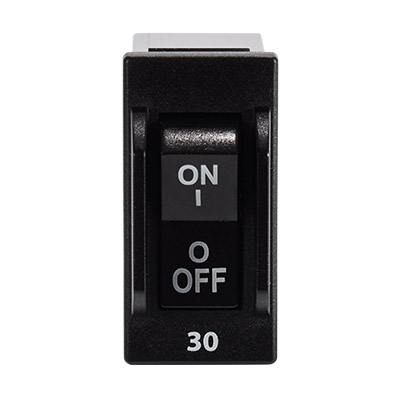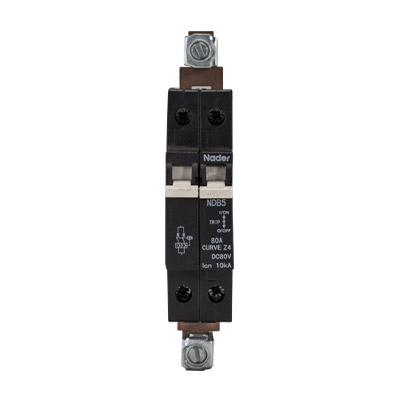Nader NDB3-30, NDB3-50 and NDB3-100 series HMCB is applicable to power systems with rated current up to 100A, rated voltage of AC480V, AC277V, 50Hz / 60Hz and DC125V and below. The products can be used for overload and short circuit protection, and can also be used for infrequent connection and disconnection. It is widely used in computer and its peripheral equipment, industrial automation system, telecommunication equipment, general power supply system, UPS uninterruptible power supply equipment, railway locomotive, marine electrical system, aerospace, elevator control system and mobile power supply equipment
2021 Quick Selection Guide »
Features
Features of NDB3 Series
- Which is little affected by the ambient temperature change. Therefore, do not consider the reduced capacity due to high temperature.
- Cooling time is not required, which can be re-closed immediately after the fault current disappears.
- The "reverse time limit" facilitates the overload protection.
Technology data
Technology data of NDB3 Series
Tripping timetable(in seconds)
| Curves\Current | In | 135% In | 200% In | 600% In | 1000% In |
| Z2/J2 | No trip | 0.3-7 | 0.1-2 | 0.08-0.3 | 0.005-0.1 |
| Z4/J4 | No trip | 3-70 | 1-15 | 0.008-2 | 0.005-0.35 |
Tripping timetable(in seconds)
| Curve\Current | In | 1.25In | 2In | 6In | 10In |
| Z2 | No trip | 0.5-6.5 | 0.13-1.2 | 0.008-0.12 | 0.004-0.06 |
| Z4 | No trip | 2-60 | 0.6-20 | 0.011-1.3 | 0.004-0.1 |
| Z6 | No trip | 45-345 | 9-60 | 0.15-5.8 | 0.005-1.7 |
| J2 | No trip | 0.7-12 | 0.13-1.3 | 0.008-0.13 | 0.004-0.055 |
| J4 | No trip | 10-160 | 2.2-20 | 0.02-1.3 | 0.005-0.065 |
| J6 | No trip | 50-700 | 10-90 | 0.1-7 | 0.006-2 |
Downloads and support
Find out more about NDB3 Series
NDB3-Series-Circuit-Breaker-for-Equipment-Datasheet.pdf
FAQs
Questions & Answers for NDB3 Series
-
What is a Hydraulic-magnetic circuit breakers?Hydraulic-magnetic circuit breakers. Hydraulic-magnetic breakers protect circuits by cutting power after a time delay. They do not depend on temperature as a tripping mechanism, so they often find use where ambient temperatures are high.
-
Do circuit breakers use electromagnets?The magnetic portion of the breaker consists of an iron core with a wire coil around it, forming an electromagnet. Load current passes through the electromagnet coils so the electromagnet responds to short-circuit currents. It may take hydraulic-magnetic breakers 10 msec or more to completely stop current flow.
-
What is a Type B circuit breaker?Type B devices are designed to trip at fault currents of 3-5 times rated current (In). For example a 10A device will trip at 30-50A. Type C devices are designed to trip at 5-10 times In (50-100A for a 10A device). Type D devices are designed to trip at 10-20 times In (100-200A for a 10A device).
-
Can a breaker be bad if it keeps tripping?The simple answer is that, yes, circuit breakers go bad, so your suspicions may be well-founded. Just like any other essential device in your home (e.g. your water heater, HVAC system, etc.), circuit breakers can quit working properly. That said, don't begin replacing your circuit breaker just yet.
-
What are the 2 types of circuit breakers?Standard circuit breakers come in two varieties: single-pole breakers and double-pole breakers. These are simpler breakers that monitor the cadence of electricity as it circulates an indoor space. It keeps track of electricity in electrical wiring systems, appliances and outlets.
-
What is a Type D circuit breaker?Type D breakers are generally found in industrial settings. According to the The Electrical Guide, Type D breakers protect devices such as transformers or welding machines — items that can tolerate higher surges of electricity than home appliances.







